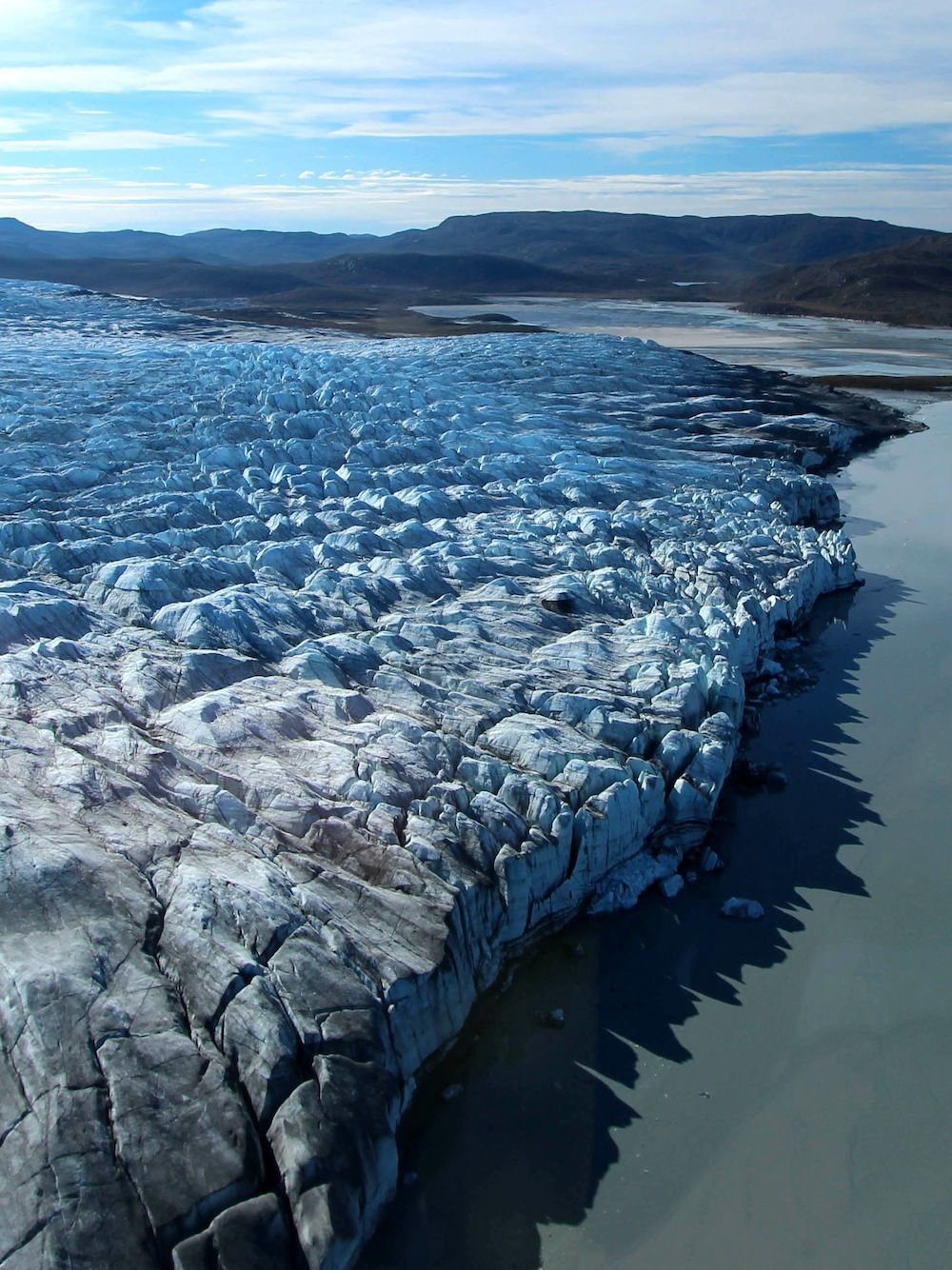
In the last 10,000 years, the Greenland Ice Sheet shrank to its smallest size around 3,000 to 5,000 years ago, when ocean temperatures were also quite high, a new study suggests.
The finding, published Nov. 22 in the journal Geology, suggests that ocean temperatures, not atmospheric temperatures, could be a critical factor in melting ice sheets in current global warming scenarios. Understanding the reaction ice sheets like the ones covering Greenland and Antarctica will have to climate change is important because the melting ice could contribute significantly to rising sea levels.
"We're particularly concerned about what the ice sheets are going to do, because when they melt, sea levels rise," said study co-author Jason Briner, a geologist at the University at Buffalo. [Image Gallery: Greenland's Melting Glaciers]
Current and past warming
One way to make predictions about the current warming period is to see how warming trends in the past affected the ice sheet, and the rivers of ice called glaciers that make them up.
As glaciers grow, they shove piles of debris and rubble aside, like giant bulldozers, forming rocky regions called moraines. Because moraines only form when glaciers get bigger, figuring out when moraines formed can provide clues to the ice sheet's size in the past.
In Greenland at some point in the last 10,000 years, the advancing ice sheet ploughed through several ocean basins, leaving piles of marine sediments and fossils such as clamshells in their wake. Briner and his team collected those fossils near the edges of the Greenland Ice Sheet. When organisms are alive, all the amino acids, or protein building blocks, in their body are left-handed, but after they die, the amino acids gradually flip to the mirror right-handed orientation. So in theory, the rate at which these proteins flip orientation can be used to figure out when the animals died.
Sign up for the Live Science daily newsletter now
Get the world’s most fascinating discoveries delivered straight to your inbox.
To figure out that rate, the team dated some of the marine fossils using a technique involving carbon isotopes, or elements of carbon with different numbers of neutrons. Separately, they measured how many of the amino acids in the marine fossils had switched orientation.
By correlating the two, the team was able to date the marine fossils and determine that most of the moraines were formed — and the glaciers advancing — about 3,000 to 5,000 years ago.
Ocean temperatures
That suggests the ice sheet had reached its smallest point just before this time period, because there was more debris to push around as the glaciers grew.
Other climactic data has found that air at that time wasn't that warm, but ocean temperatures were quite high.
"We think about global warming and how the atmosphere is warming up — that it's like putting an ice cube in an oven," Briner told LiveScience. "But what happens if you drop an ice cube not in an oven, but in a warm bath?"
The new findings suggest that the warm bath may be most critical for melting ice sheets, by melting the glaciers at the edges of the ice sheet that are submerged in warm ocean waters.
"It's warm ocean water that can actually melt the snouts of these marine glaciers," Briner said.
Follow Tia Ghose on Twitter and Google+. Follow LiveScience @livescience, Facebook & Google+. Original article on LiveScience.

Tia is the managing editor and was previously a senior writer for Live Science. Her work has appeared in Scientific American, Wired.com and other outlets. She holds a master's degree in bioengineering from the University of Washington, a graduate certificate in science writing from UC Santa Cruz and a bachelor's degree in mechanical engineering from the University of Texas at Austin. Tia was part of a team at the Milwaukee Journal Sentinel that published the Empty Cradles series on preterm births, which won multiple awards, including the 2012 Casey Medal for Meritorious Journalism.











